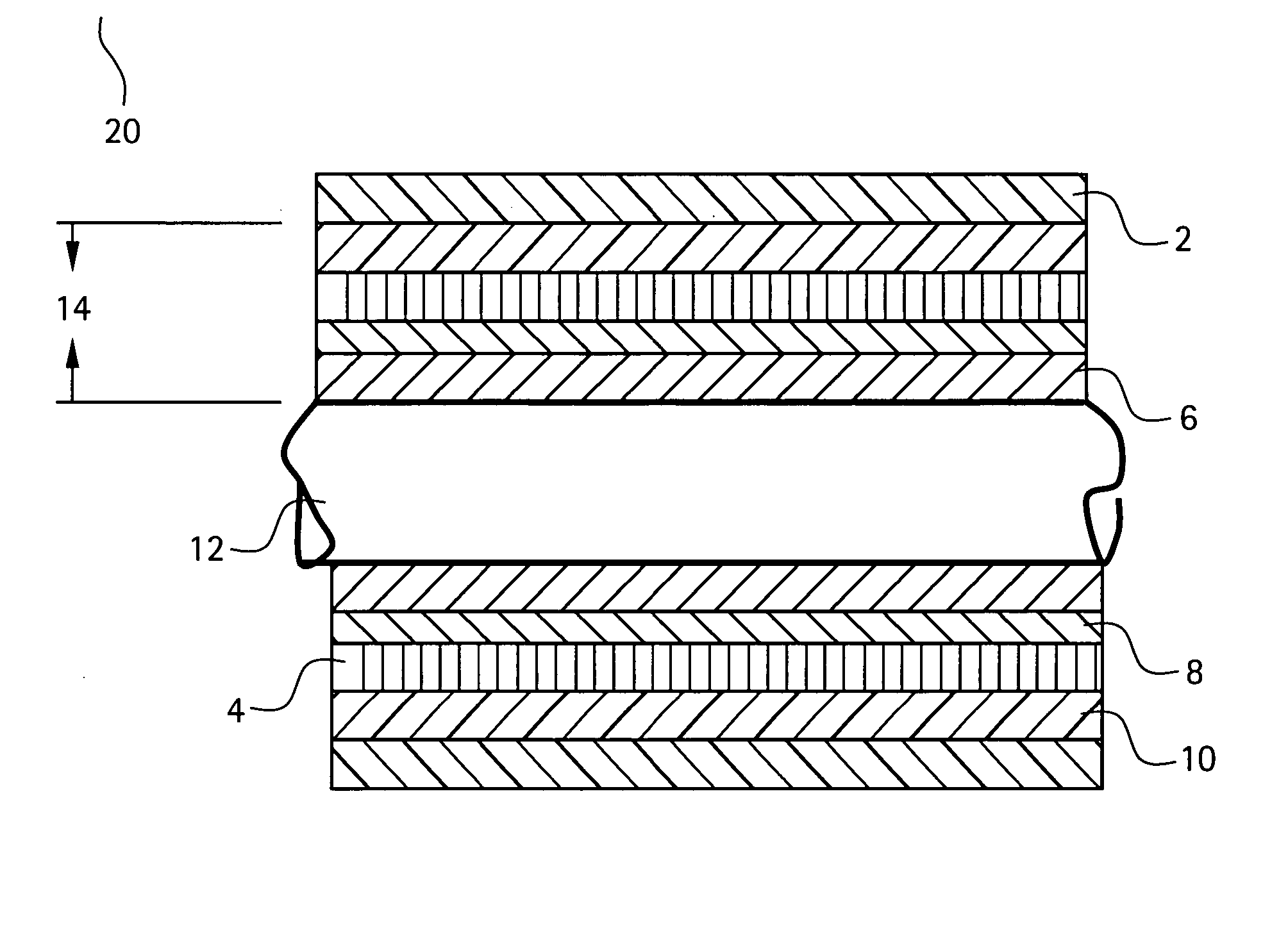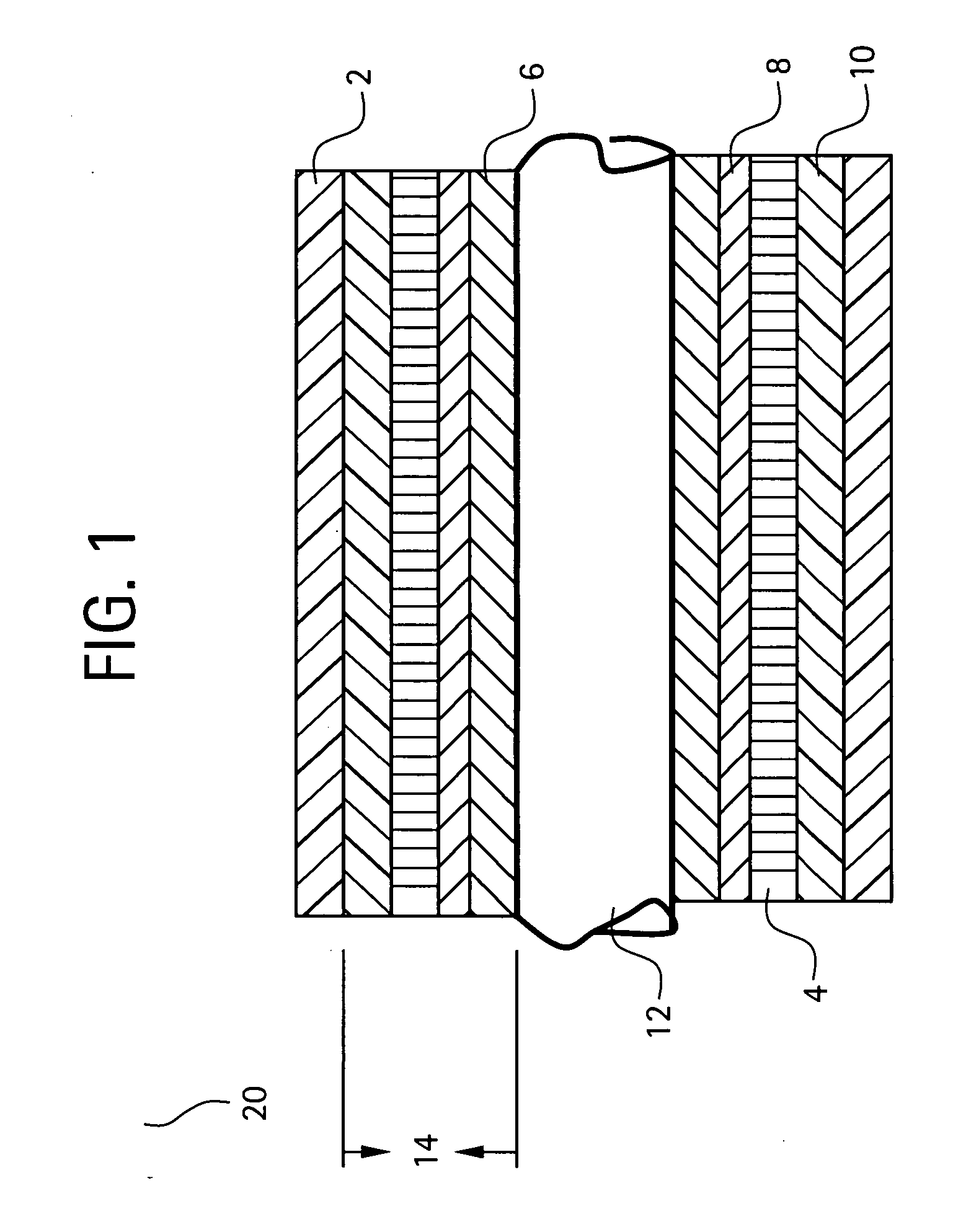Composite coatings for ground wall insulation in motors, method of manufacture thereof and articles derived therefrom
a technology of ground wall insulation and composite coatings, which is applied in the direction of insulation conductors/cables, power cables, cables, etc., can solve the problems of energy expenditure to overcome the retained magnetic, energy loss in the magnetic core of the material, and hysteresis loss
- Summary
- Abstract
- Description
- Claims
- Application Information
AI Technical Summary
Problems solved by technology
Method used
Image
Examples
example 1
[0090] The following example was conducted to determine the ability of the wire to withstand the pressures developed during compaction.
[0091] All the magnetic wires were characterized for (i) insulation thickness, (ii) windability, (iii) breakdown voltage / strength, (iv) compressibility and (v) thermal withstand capability. The measurement method / s adopted are detailed below.
[0092] Insulation thickness: The diameter of the wire with and without insulation was measured. The former corresponds to the as-received magnet wire diameter and the later essentially corresponds to the diameter of the bare copper wire, obtained by removing the insulation either via thermal method, mechanical scratching or microscopy. Thermal method involves exposing the wire to 300° C. temperatures to make the insulation brittle. Subsequently, slight twisting / bending leads to insulation flaking off. In the case of mechanical scratching, the insulation was removed using a fine blade. Adequate care was taken to...
example 2
[0099] This example was undertaken to determine the ground wall insulation tape that may be used to withstand the compaction. The ground wall insulation tapes are evaluated for AC electrical breakdown test before and after heat treatment at temperatures ranging from 300 to 600° C. for 30 minutes in nitrogen. The breakdown test was performed on the tape placed between two brass electrodes of 0.25 inch diameter. The voltage between the electrodes was increased till the breakdown of the tape / s. The breakdown voltage (BDV) reported herein corresponds to an average of at least 6 data points per specimen.
[0100] As in the case of magnet wire the major properties of ground wall insulation required for the present application are (i) high temperature withstand capability and (ii) the compressibility in the SMC medium. Several insulation tapes were identified for the preliminary testing and screening as shown in Table 3. The mica tapes (Samples 1 and 2) are made of muscovite mica paper backe...
example 3
[0102] This example was undertaken to determine the bobbin insulation system. Selected magnetic wires were subjected to coil / bobbin winding. Initially, 30 turns are wound using a winding machine. The bobbin was then wrapped (manually) with the ground wall insulation tape and subjected to curing at 130° C. for 3 hrs. The wrapping of the insulation tape was performed with 50% overlap in all the cases. The coil was then subjected to breakdown voltage (BDV) test, compressibility and heat treatment in nitrogen as discussed below.
[0103] The bobbin (wrapped with ground wall insulation tape) was placed in an appropriate die cavity and filled with SMC particulates. The bobbin was then subjected to compression by applying the pressure on the top punch of the die. The compressed sample was then ejected from the die and subjected to simple electrical tests: (i) continuity test between the two edges of the magnet wire (i.e., bobbin) and (ii) continuity test between the surface of the compressed...
PUM
| Property | Measurement | Unit |
|---|---|---|
| thickness | aaaaa | aaaaa |
| thickness | aaaaa | aaaaa |
| pressure | aaaaa | aaaaa |
Abstract
Description
Claims
Application Information
 Login to View More
Login to View More - R&D
- Intellectual Property
- Life Sciences
- Materials
- Tech Scout
- Unparalleled Data Quality
- Higher Quality Content
- 60% Fewer Hallucinations
Browse by: Latest US Patents, China's latest patents, Technical Efficacy Thesaurus, Application Domain, Technology Topic, Popular Technical Reports.
© 2025 PatSnap. All rights reserved.Legal|Privacy policy|Modern Slavery Act Transparency Statement|Sitemap|About US| Contact US: help@patsnap.com



